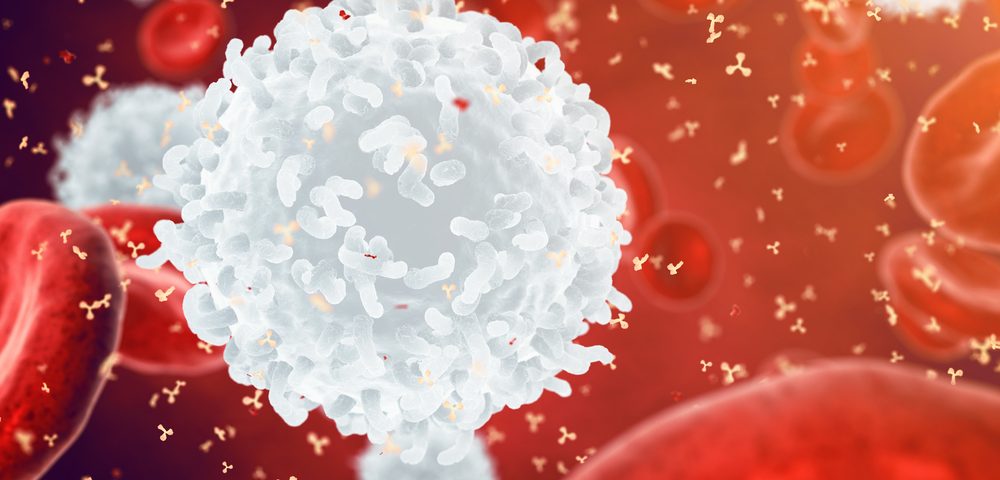An entirely new type of T-cell found in people with rheumatoid arthritis works in a unique way to drive disease processes in the joints by teaming up with other immune cells. The discovery of this T-cell, which is rare in other people, offers opportunities for research into more targeted treatment approaches that may turn out to be more effective and less prone to side effects than existing therapies.
The cell was also found in the blood of patients, where its numbers corresponded to disease activity, indicating that this T-cell may be used as a biomarker of disease.
The study, “Pathologically expanded peripheral T helper cell subset drives B cells in rheumatoid arthritis,” was published in the journal Nature.
T-cells, a type of white blood cell, are responsible for a variety of immune responses in our bodies.
“While the newest therapies for rheumatoid arthritis have helped transform our ability to treat the disease, they are fairly blunt instruments — blocking components of the immune system in a non-specific, global way,” Dr. Deepak Rao, the study’s lead author, who co-directs the Human Immunology Center at Brigham and Women’s Hospital, said in a press release.
“Our results help illuminate a path toward treatments that are much more precise and focused only on the most relevant immune cells,” he said.
Researchers have long known that T-cells are involved in the events that cause rheumatoid arthritis. But the details of the processes have been all but obvious and, as Rao pointed out, only allowed for the development of treatments acting in a very generalized manner on the immune system.
Using new methods that allow for a detailed characterization of small numbers of immune cells, the research team analyzed samples of joint tissue and fluid, as well as blood, from patients with RA. The techniques, referred to by the team as a “disease deconstruction approach,” allowed them to spot the cell that was different from previously known T-cell types, found in large numbers in the joints.
This cell was similar to a previously identified cell, but had a number of curious features. Despite having high levels of a molecule that restrains immune reactions, it was highly active. It also had surface markers that grouped it together with a cell type called T-helper cells, yet it was different from any T-helper cell researchers know of.
“These cells don’t adhere to the conventional view of helper T-cells, and that is really interesting,” Rao said.
In-depth analyses allowed the team to track down what the cells were up to. Unlike other T-helper cells, it traveled to areas of chronic inflammation and triggered antibody production from immune B-cells.
Researchers also measured the numbers of the cells in the blood of patients. Although these cells were found in significantly lower numbers, they were higher in patients before treatment began and dropped as the disease improved with treatment.
Since this is the first time researchers have detailed the events leading up to autoantibody production, the findings also have bearing on other autoimmune conditions. The team is now exploring if the newly found T-cell also drives disease processes in conditions such as lupus, multiple sclerosis, or type 1 diabetes.
“This work is a remarkable illustration of the power of our disease deconstruction approach,” said Dr. Michael Brenner, who co-directs the Human Immunology Center together with Rao. “We hope it will prove equally illuminating as we apply it to other immune-mediated diseases.”



Might it be assumed that this would apply to PsA, or is that a logically liganded misnomer?
It is hard for patients to assess the impact of such researches in ones own domain of interest when so little is known of the action of this family of diseases. So I am asking.
Additionally, is their any more technical detail on the disease deconstruction approach available to the lay thinker.
Many thanks.
The disease deconstruction approach is just another way of describing what many researchers of human disease do; they study the smallest components of the disease. In this case, it was immune cells. Others study molecular events and cellular signaling pathways.